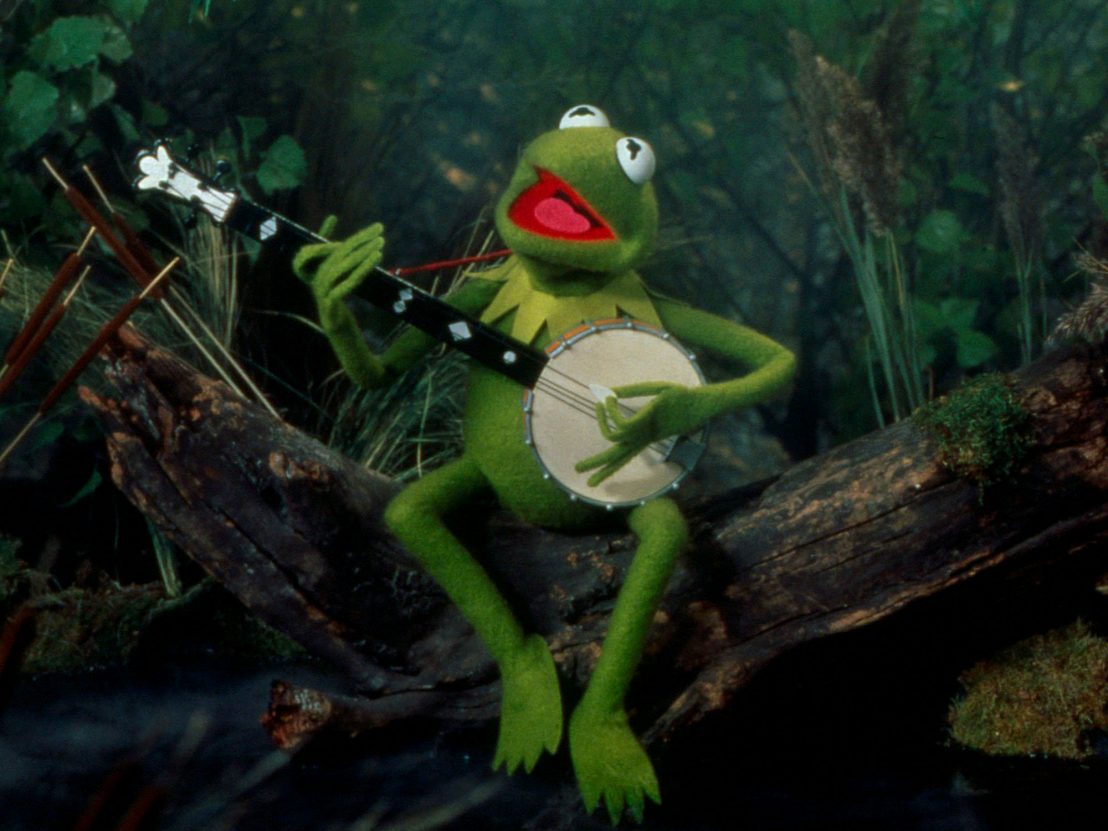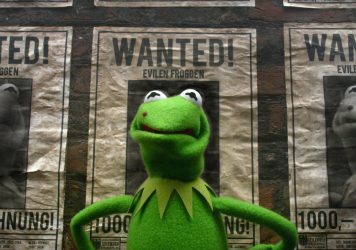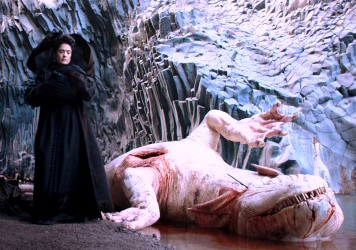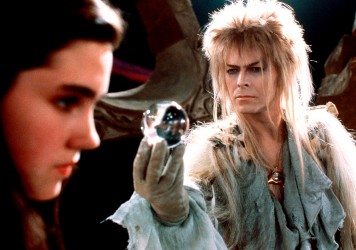
Picture the scene: in the bucolic English countryside, a frog and a bear peek between the branches of an old tree. “A bear in his natural habitat,” the furry one observes. Dubious, the green guy replies, “You’re not a natural bear.” Despite his static features, the bear truly looks surprised.
His friend persists, explaining that “real” bears have teeth and bones, not fake fur and magenta noses. To this, the bear claps back. “I’ve got a newsflash for you, kid! You’ve got a wire on your arm!” The frog is astonished, mouth agape. “I’m sorry!” the bear repents. “I didn’t mean to hurt you.” He adds, sweetly, “I believe in you.”
In under two minutes, this dinky bit of improv captures so much of The Muppets’ eternal charm. It’s got their silly, surreal sense of humour. It showcases Kermit the Frog and Fozzie Bear’s wholesome friendship (nourished by the real-life bond between puppeteers Jim Henson and Frank Oz). And it exemplifies The Muppets’ inimitable knack for bridging fantasy and reality – a capacity that some folks, at the time, still doubted.
In 1978, The Muppet Show was an established international hit. However, its stars had only appeared on studio sound stages, as seen on TV sets. Kermit and Fozzie’s screen test, described above, had to prove two things: that The Muppets could blend into real-world environments, and that Henson’s hands-on magic would be just as mesmerising on the big screen. It worked. Before long The Muppet gang were riding bikes, driving cars and stealing hearts in the first of many feature films.
The Muppet Movie opened in the UK on 31 May, sandwiched neatly between The Warriors and Moonraker. Directed by TV journeyman James Frawley, the film recounts Kermit’s voyage from a Mississippi swamp to a Hollywood backlot, where he and newfound friends Fozzie Bear, Miss Piggy, Rowlf the Dog and The Great Gonzo realise their dream of singing, dancing and making people happy. Consider it an origin story for the original MCU: the Muppet Cinematic Universe.
Well, it’s “sort of, approximately” how The Muppets got started, Kermit tells his nephew Robin in scene one, at the world premiere of their film-within-a-film. Over the ensuing 90 minutes, The Muppet Movie oscillates from family comedy to rollicking road movie, with psychedelic songs and genre parody scenes in between. This eclectic approach is core to the troupe’s playfully subversive credo.

From end to end, there’s witty wordplay (see: ‘I Hope That Something Better Comes Along’), silly sight gags (a literal fork in the road) and meta references aplenty (Dr Teeth reads the screenplay, later used to locate Kermit and co). Characters frequently address the camera, and the film ends with jilted Sweetums literally breaking the fourth wall – bursting through the cinema screen, shouting, “I just knew I’d catch up with you guys!”
Forty years on, Jerry Juhl and Jack Burns’ postmodern humour occasionally feels outdated. First-time audiences today likely won’t recognise Milton Berle, Telly Savalas, HB Haggerty and the mid-century stars whose effect was sadly temporary. On the other hand, cameo appearances from Carol Kane, Steve Martin and Orson Welles retain their original appeal and cinematic value, making the film a fount of nostalgia for many viewers.
But the practical effects remain impressive. An $8m budget – the equivalent of more than $31m today – meant that, when it came to movie magic, Henson’s team could shoot for the stars. Actually, creating a shooting star effect was quite cheap and easy (it’s just a fairy light on a wire). The film featured two reveals that were far more astonishing. See: Kermit’s feet.
It may seem quaint, even trivial now, but in 1979 getting a hand puppet to dance and cycle with ostensible head-to-toe autonomy was a remarkable exploit – Roger Ebert even mentioned it in his glowing review. Though Kermit had been cruising (albeit with visible wires) since The Muppets Valentine Show in 1974, here he got upgraded to a full-scale Schwinn, operated marionette-style from a moving crane above.
To set Gonzo sailing on a bunch of balloons, effects whiz Franz “Faz” Fazakas built a radio-controlled stunt double for the bold, daring… whatever. Henson himself even spent five days underwater, performing the singing, banjo-strumming, full-bodied Kermit in the unforgettable ‘Rainbow Connection’ sequence.
The technology used in The Muppet Movie prefigured Henson’s The Dark Crystal, Fraggle Rock and in his Creature Shop. From the 60-foot version of Animal to the pint-sized Robin, almost every effect was captured in camera, imbuing the film with an enchanting believability that holds up today – even in comparison to some advanced CGI. But all the remote controls and stunt vehicles in the world can’t make a film compulsively watchable without a strong heart – and, Henson might add, an ethical compass – to guide it.
Full of warmth, devoid of cynicism, The Muppet Movie is an earnest testament to friendship. Despite their complex quirks and fascinating foibles, The Muppets share deep commitment to their dream and, moreover, to each other. They may look like a felt-and-glue menagerie, but they model joy, grief, confusion, anxiety, tolerance and forgiveness – palpably human sensations – with total sincerity. Maybe it’s only movie magic, but it’s a dream worth believing in.
Published 31 May 2019

The Muppets return to the big screen for more zany antics in this big-hearted creature feature.

Tale of Tales is a return to a much darker, more traditional form of fantasy storytelling.

By Taryn McCabe
So much about this cult fantasy endures, from its use of practical effects to David Bowie’s captivating performance.